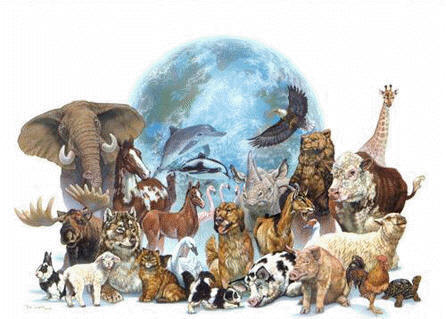
DOWNLOAD BOOK
CONTENTS
SECTION 1: GUIDELINES FOR THE DEVELOPMENT
OF LEARNING PROGRAMMES 1
1.1 INTRODUCTION 1
1.2 PURPOSE OF THE TEACHER’S GUIDE FOR THE DEVELOPMENT OF LEARNING
PROGRAMMES 1
1.3 DEFINITIONS 2
1.3.1 Learning Programme 2
1.3.2 Work Schedule 2
1.3.3 Lesson Plan 2
1.4 THE PURPOSE OF A LEARNING PROGRAMME, WORK SCHEDULE AND LESSON PLAN 3
1.4.1 From the RNCS to the Learning Programme 3
1.4.2 From the Learning Programme to the Work Schedule 3
1.4.3 From the Work Schedule to the Lesson Plan 4
1.5 ISSUES TO BE CONSIDERED WHEN DEVELOPING LEARNING PROGRAMMES, WORK
SCHEDULES AND LESSON PLANS 5
1.5.1 Philosophy and Policy 5
1.5.2 Principles Underpinning the Curriculum 5
1.5.3 Time Allocation and Weighting 6
1.5.4 Integration 6
1.5.5 Resources 7
1.5.6 Inclusivity and Barriers to Learning 7
1.5.7 Differences between Learning Areas and Learning Area Statements 7
1.5.8 Clustering of Assessment Standards 9
1.6 DEVELOPMENT PROCESS 10
1.6.1 Developing a Learning Programme 10
1.6.2 Developing a Work Schedule 11
1.6.3 Developing a Lesson Plan 12
1.7 ASSESSMENT 15
1.7.1 Nature of Assessment 15
1.7.2 Planning for Assessment 16
1.7.3 Assessment Strategies 17Teacher’s Guide for the Development of Learning Programmes
SECTION 2: THE NATURAL SCIENCES LEARNING
PROGRAMME 19
2.1 SYNOPSIS 19
2.1.1 Description of the Learning Area in the South African Context 19
2.1.2 The Natural Sciences Learning Area Contexts 19
2.2 RELATIONSHIP BETWEEN THE LEARNING OUTCOMES 20
2.2.1 Weighting of the Learning Outcomes 20
2.2.2 Process Skills across the Three Learning Outcomes 20
2.3 ASSESSMENT STANDARDS 21
2.3.1 Interpreting the Assessment Standards 22
2.4 CORE KNOWLEDGE AND CONCEPTS FOR NATURAL SCIENCES
ASSESSMENT IN NATURAL SCIENCES 23
2.5 ASSESSMENT IN NATURAL SCIENCES 25
2.6 TEACHING AND LEARNING IN NATURAL SCIENCES 25
2.6.1 Promotion of Scientific Literacy 26
2.6.2 The Development and Use of Science Process Skills 26
2.6.3 Development of and Application of Scientific Knowledge and Understanding 26
2.6.4 Science and Society 26
2.6.5 Access to Science Education for All 26
2.7 OVERCOMING BARRIERS TO TEACHING, LEARNING AND ASSESSMENT 29
2.7.1 Language 30
2.7.2 Inadequate Prior Knowledge 30
2.7.3 Not Realising that Learners may hold Different World-views 31
2.7.4 Lack of School Laboratories and Equipment 31
2.7.5 Public Perceptions of the Natural Sciences and Social Stereotypes 31
2.8 ISSUES IN DESIGNING A LEARNING PROGRAMME, WORK SCHEDULE AND LESSON
PLANS FOR NATURAL SCIENCES 32
SECTION 3: INTERMEDIATE PHASE 35
3.1 THE INTERMEDIATE PHASE LEARNER 35
3.2 LEARNING PROGRAMME OPTIONS IN THE INTERMEDIATE PHASE 35
3.2.1 What the Integration of Learning Areas means 36
3.2.2 Implications for Planning 37
3.2.3 Options to be Considered 37Natural Sciences
3.3 ILLUSTRATIONS OF LEARNING PROGRAMMES 38
3.3.1 An Illustration of a Natural Sciences Learning Programme in the Intermediate
Phase 38
3.3.2 Developing an Integrated Learning Programme for Natural Sciences and
Technology 44
3.4 ILLUSTRATIONS OF WORK SCHEDULES 49
3.4.1 An Illustration of a Natural Sciences Work Schedule 49
3.5 ILLUSTRATIONS OF LESSON PLANS 53
3.5.1 Lesson Plan for the Natural Sciences 53
3.5.2 Lesson Plan Showing Integration of Natural Sciences with Technology 56
SECTION 4: SENIOR PHASE 59
4.1 THE SENIOR PHASE LEARNER 59
4.2 DEVELOPING A LEARNING PROGRAMME AND WORK SCHEDULE
IN THE SENIOR PHASE 60
4.3 ILLUSTRATION OF A LESSON PLAN 61
SECTION 5: LEARNING AND TEACHING SUPPORT
MATERIALS (LTSMs) 65
APPENDICES 67
APPENDIX 1 68
The Assessment Standards 68
APPENDIX 2 74
Statements of Core Knowledge and Concepts 74








0 comentarios:
Publicar un comentario